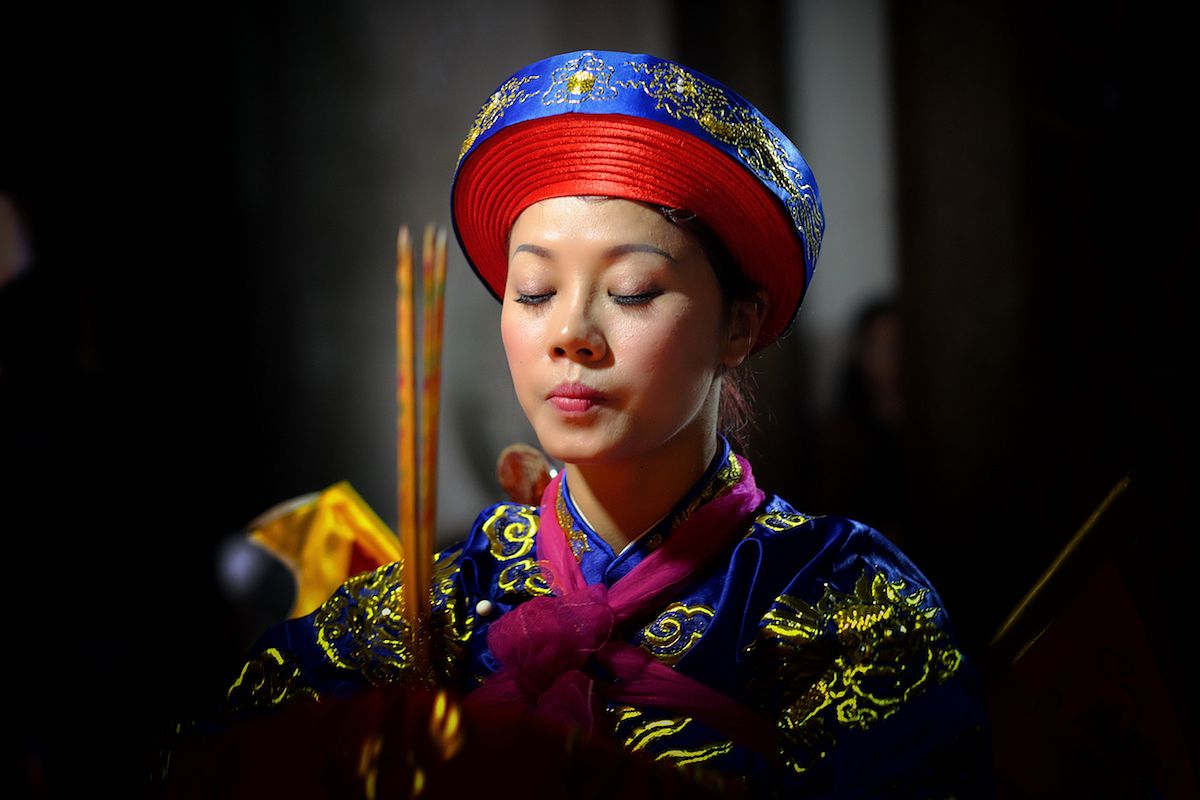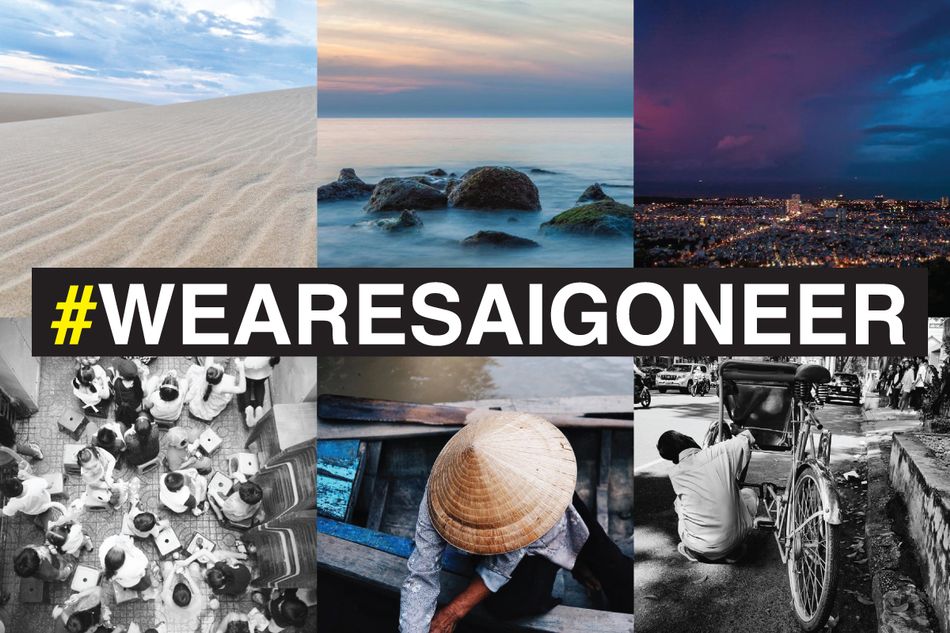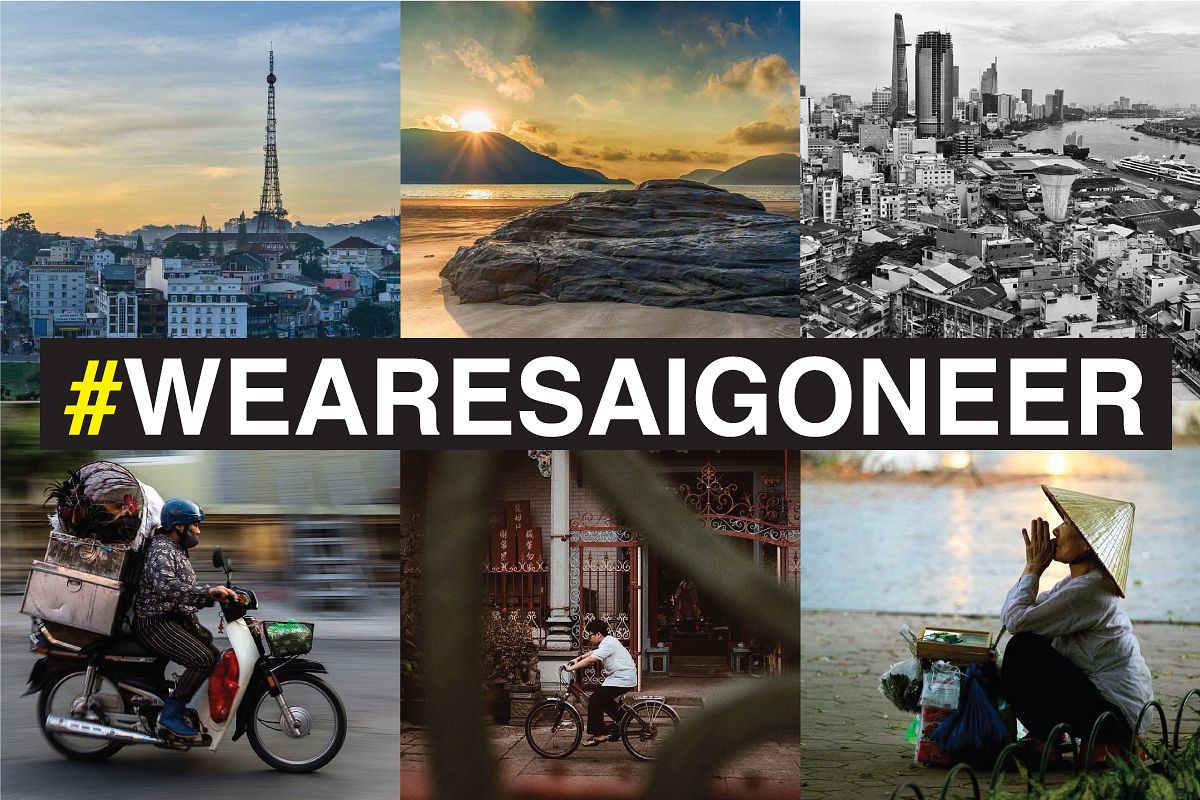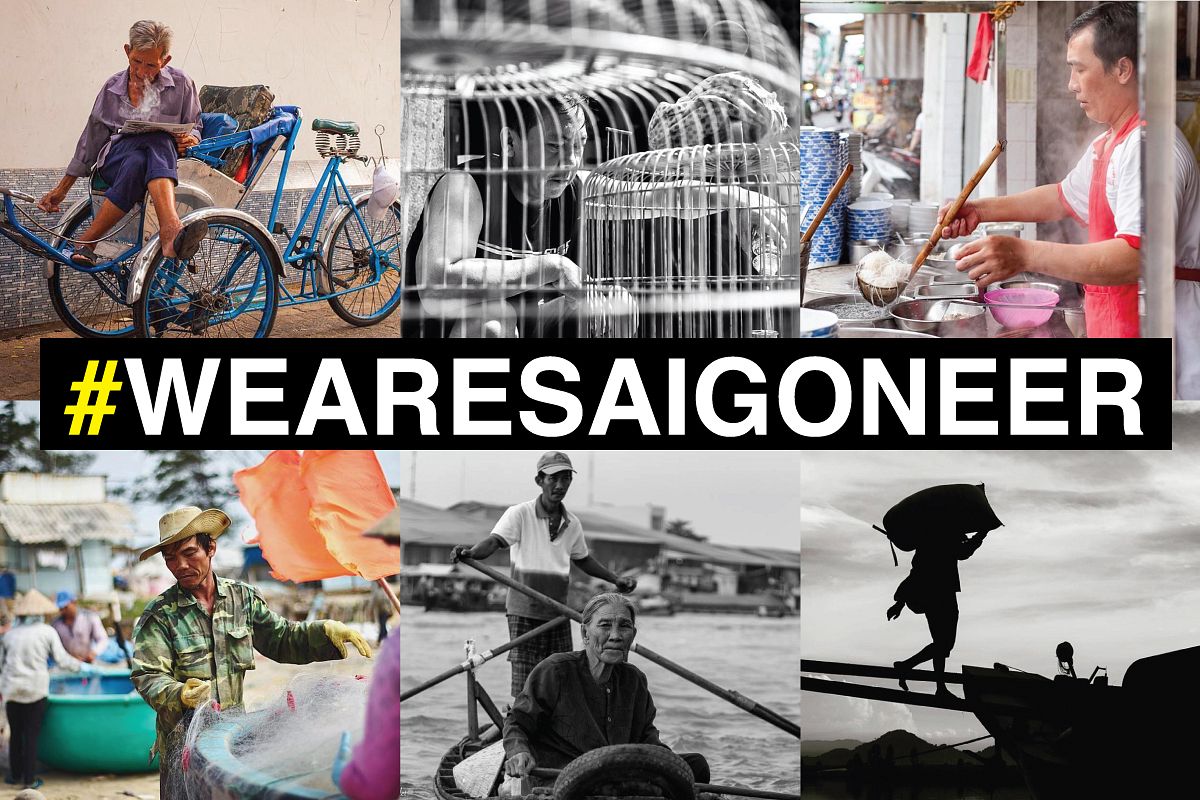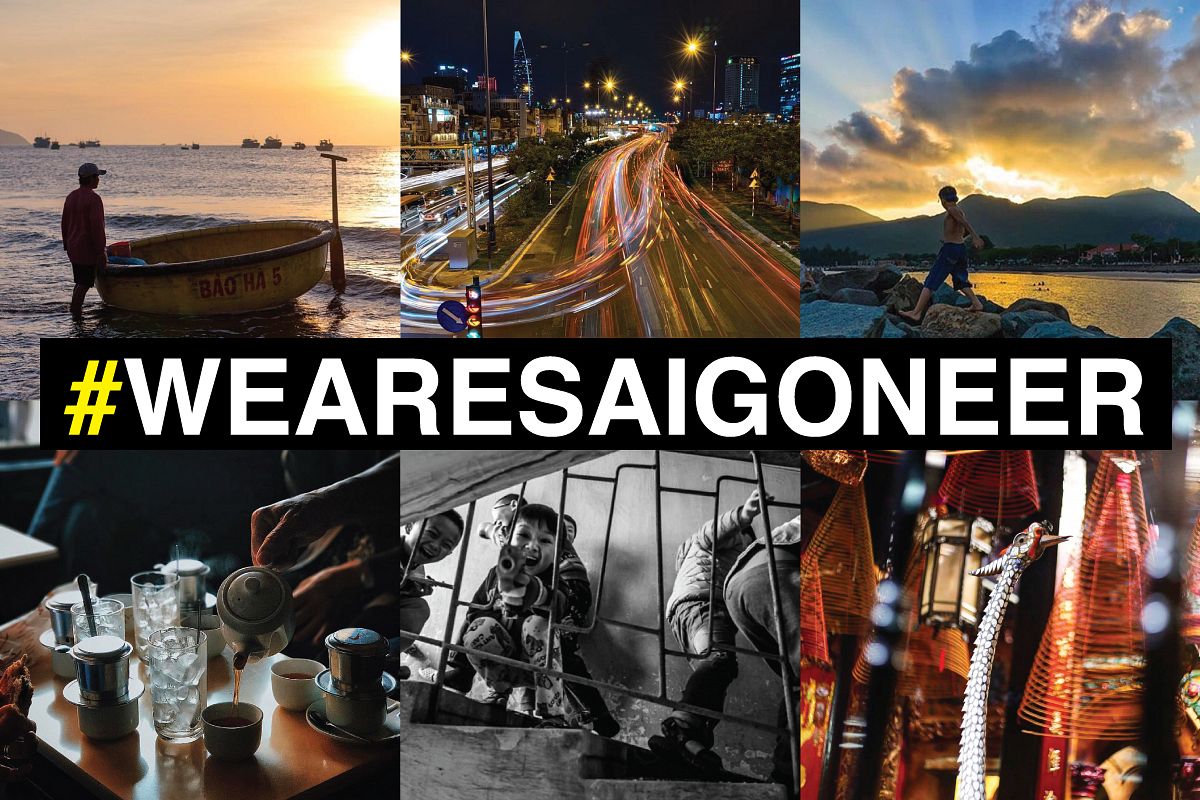Tewfic El-Sawy’s introduction to Đạo Mẫu, also known as the Mother Goddess religion, began with music.
Traveling through Sapa in 2014, a strange sound captured the attention of the New York-based travel photographer. El-Sawy hung around the building where he’d heard the music, chatted in sign language with a woman inside, and was later allowed to stay for the hầu đồng ceremony which took place that morning.
“This is how my journey into the world of Đạo Mẫu…started,” El-Sawy tells Saigoneer via email. “Totally by accident.”
Fast forward 18 months and the photographer has put the finishing touches on his new photo book, Hau Dong: The Spirit Mediums of Viet Nam. The large format publication features over 100 color photographs of Vietnam’s lively hầu đồng ceremonies, in which Đạo Mẫu practitioners dress as specific deities or historical figures and act as spirit mediums, channeling the essence of individual deities in their performance.
Practiced mainly in northern Vietnam, followers of the Mother Goddess religion worship four main goddesses: Heaven, Mountains and Forests, Water and Earth. These deities are believed to control all aspects of daily life and are especially helpful for those confronted with issues related to marriage and fertility. When faced with problems, Đạo Mẫu believers will consult a spirit medium by way of the hầu đồng ceremony, in which the medium is able to channel a given spirit, giving followers one-on-one time with a particular deity.
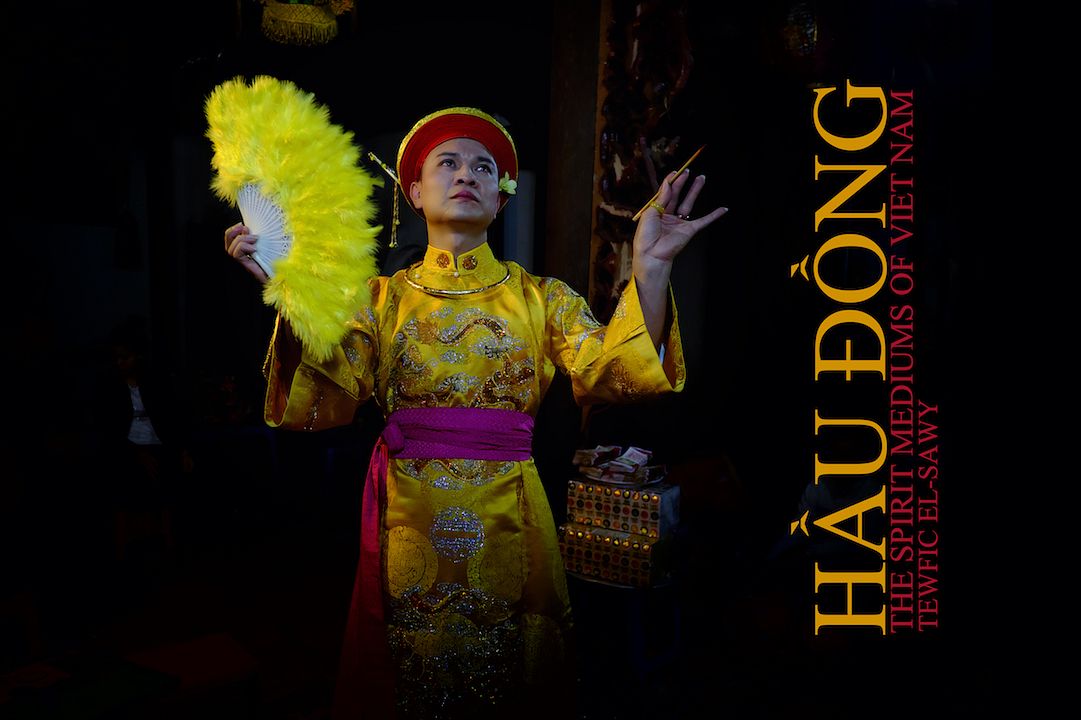
In order to understand the intricacies of Đạo Mẫu and its vibrant hầu đồng rituals, El-Sawy traveled extensively through northern Vietnam, attending ceremonies in Hanoi as well as Lang Son, Hai Phong, Bac Ninh, Vinh Phuc and Hai Duong provinces. The photographer flew back and forth from Vietnam, clocking a half-dozen two-week jaunts in total as he sought out different ceremonies and researched the ins and outs of this complex ritual, which can sometimes last for hours on end.
“Although hầu đồng ceremonies follow the same structure, none are alike to each other,” he says. “The personalities of the mediums, the talent of the supporting musicians, the style of the costumes, the dance steps, the audience's enthusiasm all vary. So my experience varied from one to the other.”
In each performance, however, the photographer notes a few similarities, namely the mixture of patriotism and genuine joy invoked by this “spiritual theater”, as he calls it.
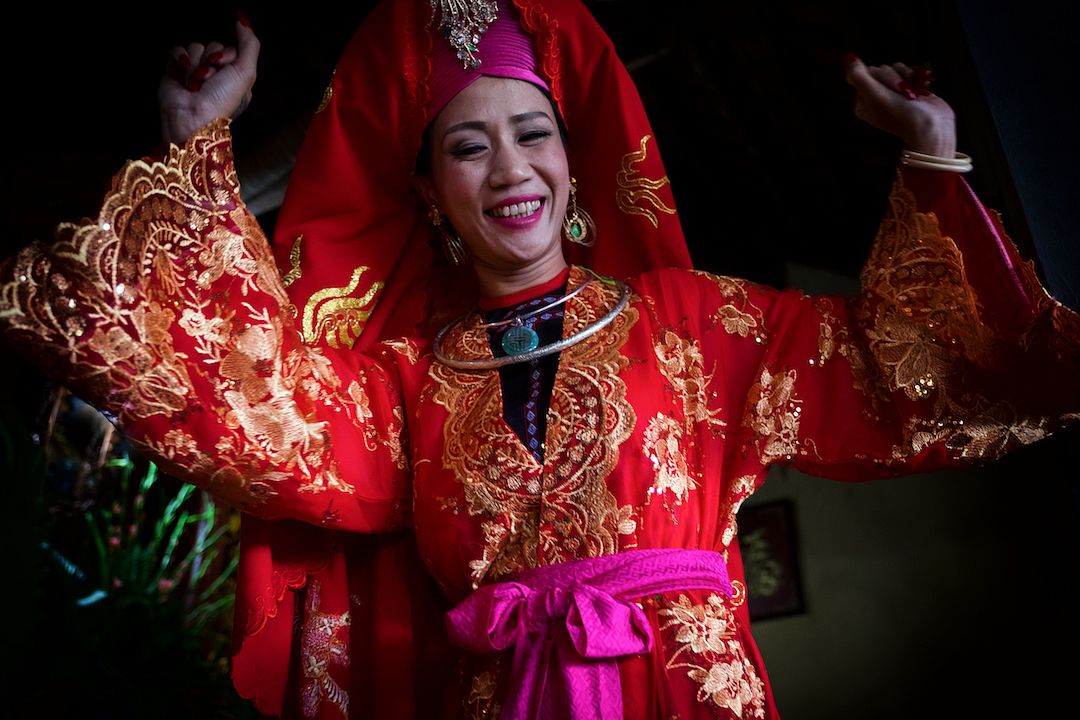
On a personal level, the appeal for El-Sawy was two-fold. “Aside from realizing that I could be the first non-Vietnamese photographer to document the tradition…I was also intrigued by the complexity of its influences and manifestations,” he explains.
“I was also attracted by the absence of a structural hierarchy, and its focus on the ‘now’ rather than the ‘later’,” El-Sawy continues. “This is a potent and practical message to people who seek to improve themselves during their lifetime rather than wait till they’re gone.”
As a fly on the wall in many of these ceremonies, El-Sawy was able to capture not only the performances themselves but also the reactions of the audience, who had sought out these spirit mediums as a means of resolving problems in their own lives. According to the photographer, each party feeds off the other’s energy and enthusiasm for the ceremony.
“I think [the photographs] that have the strongest impression are those in which the mediums are deep in trance, awaiting the spirit's’ ‘arrival’ and ‘entering their bodies’, or those of the audience members being ecstatic and experiencing euphoric reactions during these ceremonies,” he says.
While Vietnam has no shortage of homegrown religions, the unique intersection of theater, spirituality, music, fashion, dance and poetry in a Đạo Mẫu hầu đồng ceremony helps this particular cultural practice to stand out from the rest.
“I think the multitude of these elements in the hầu đồng ceremonies is what makes this spiritual tradition so unique,” El-Sawy says. “In contrast with other religious traditions which are, by and large, somber, dour, severe and joyless, intimidating and even menacing if believers do not abide by certain strictures, hầu đồng ceremonies are welcoming and are largely happy events. I have not seen a single scowling face in the audience in all the ceremonies I’ve attended. The tradition is certainly about doing good and abstaining from evil, but it conveys the message differently.”
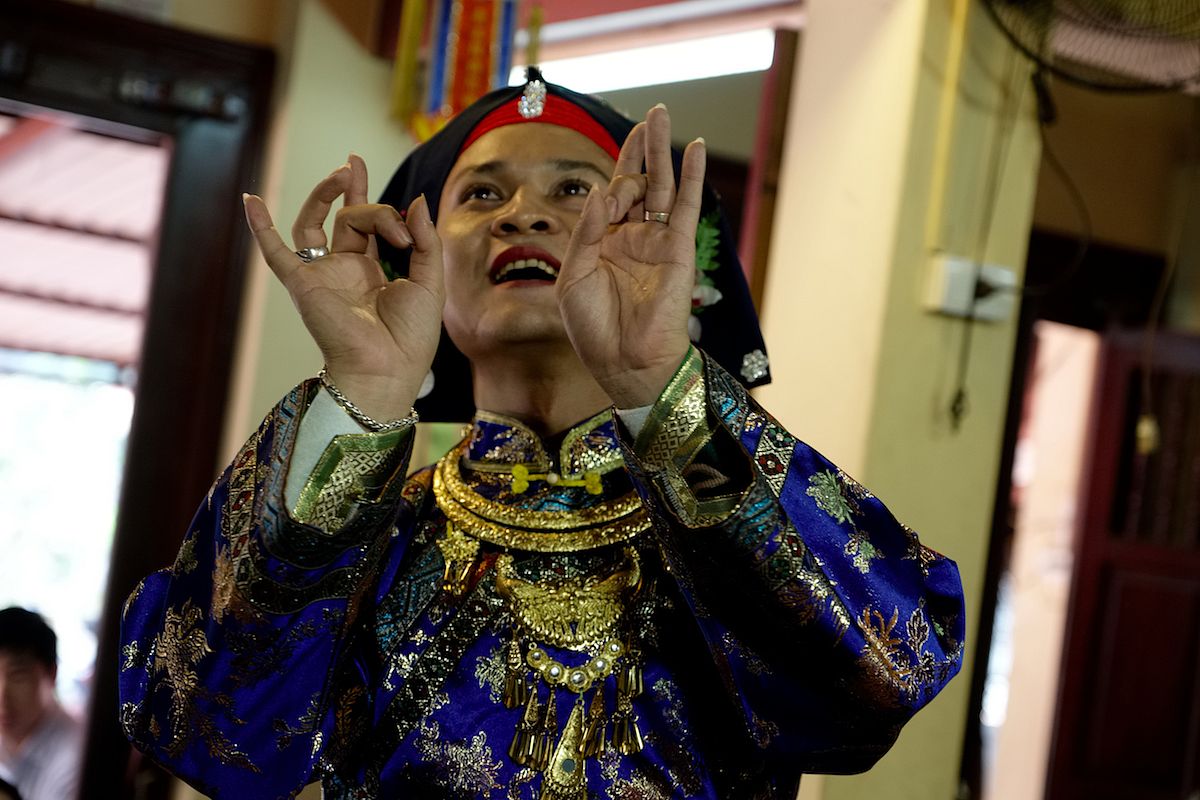
As Vietnamese officials are pushing for the Mother Goddess religion’s hầu đồng ceremony to receive UNESCO recognition as an Intangible Cultural Heritage, El-Sawy’s book aims to introduce people beyond Vietnam’s borders to the tradition.
Tewfic El-Sawy will be giving a series of photo talks in Hanoi from November 5-12 regarding his book project. Hau Dong: The Spirit Mediums of Viet Nam is available for purchase online via Blurb and Amazon. You can view more of El-Sawy's hầu đồng photographs here.
[Photos courtesy of Tewfic El-Sawy]

